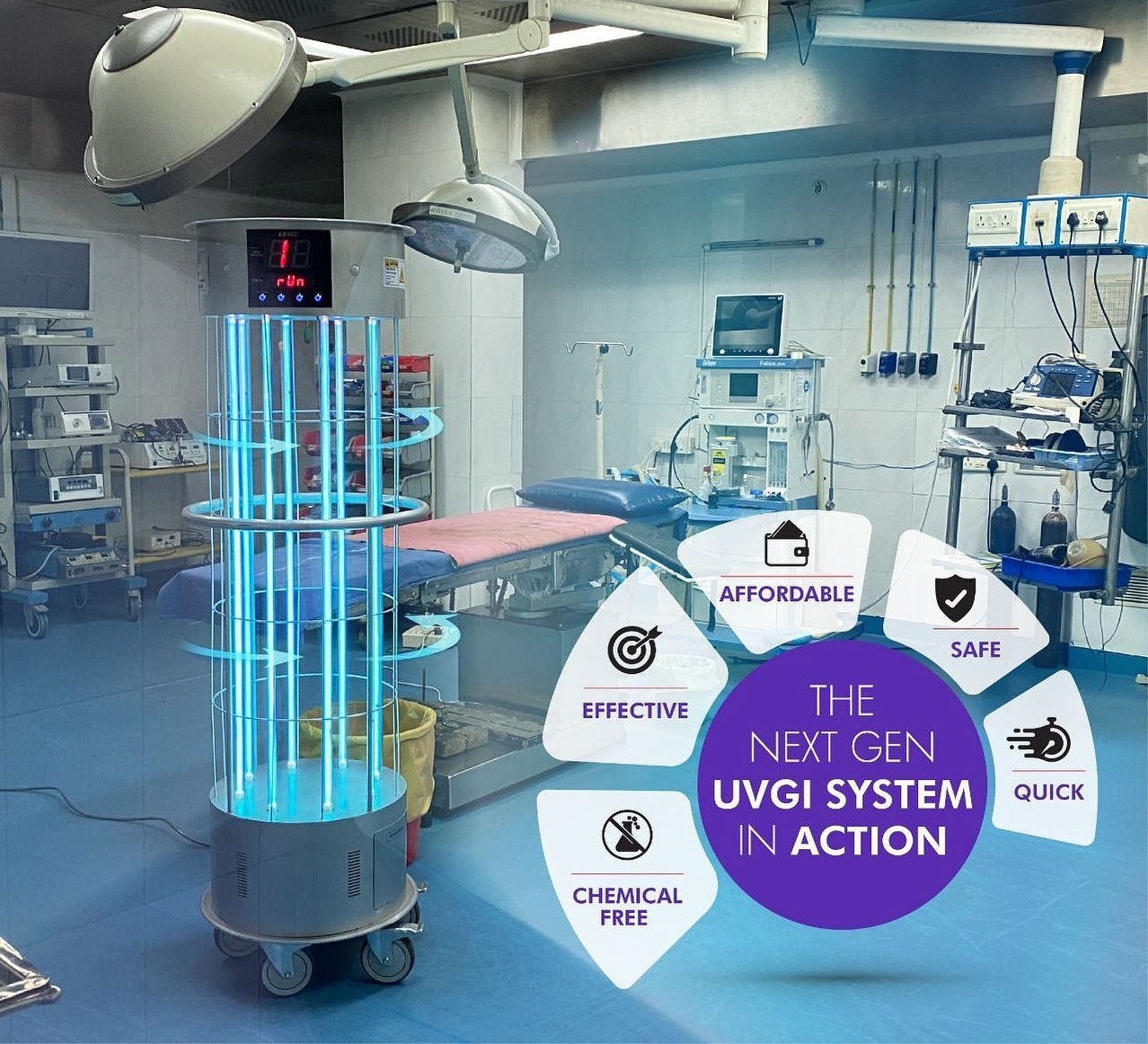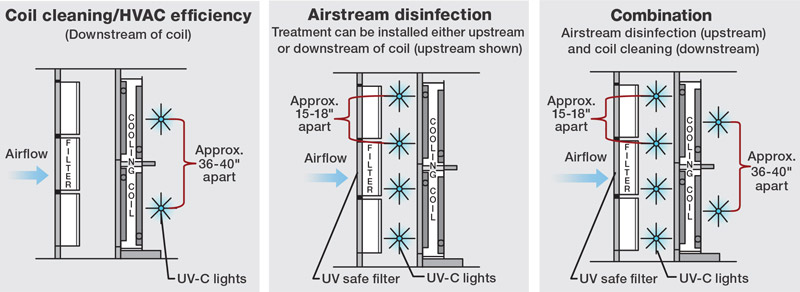UV Sanitation: The Cutting-Edge Modern Technology Transforming Sanitation Practices
In the realm of cleanliness methods, one modern technology has actually arised as a game-changer: UV sanitation. With its capability to remove unsafe pathogens, this sophisticated innovation is changing the means we approach cleanliness and health. Yet how does UV disinfection job, and what are the advantages it uses? From medical care setups to food processing, UV disinfection is making its mark in numerous sectors. In this conversation, we will certainly explore the complexities of this transformative technology and expect its encouraging future.
How UV Disinfection Functions
UV disinfection functions by using ultraviolet light to destroy or suspend bacteria, providing a chemical-free and very effective technique of sanitation. This innovation utilizes the power of short-wavelength UV-C light, which is qualified of harming the DNA and RNA of microorganisms, therefore providing them unable to replicate and create injury.
The process begins with the installation of UV disinfection systems, which include UV lamps that release UV-C light. These lamps are tactically put in locations where microbial contamination is a worry, such as water therapy plants, healthcare facilities, research laboratories, and food processing centers.
When microorganisms are subjected to UV-C light, the photons penetrate their cell wall surfaces and get to the DNA and RNA inside. The high-energy UV-C photons disrupt the hereditary material by creating bonds in between adjacent nucleotides, causing the development of thymine dimers. These dimers avoid the microbes from replicating, making them safe.
UV sanitation is extremely reliable versus a wide variety of microorganisms, including germs, viruses, and bloodsuckers. It is especially efficient against waterborne microorganisms like E. coli, Giardia, and Cryptosporidium. UV sanitation is a chemical-free technique, getting rid of the requirement for potentially hazardous disinfectants and reducing the risk of harmful sanitation spin-offs.
Benefits of UV Sanitation
UV sanitation uses various advantages in the area of hygiene, making it a very liked technique for successfully removing unsafe microbes. Among the key advantages of UV sanitation is its capability to offer a chemical-free remedy. Unlike traditional disinfection methods that depend on chemicals, UV disinfection utilizes ultraviolet light to ruin the DNA of bacteria, providing them incapable to replicate and trigger infections. This not just removes the requirement for potentially harmful chemicals yet likewise minimizes the risk of chemical deposit on surface areas.

UV disinfection is additionally highly functional in its applications. It can be used in various setups, consisting of healthcare facilities, schools, food handling facilities, and water treatment plants. UV disinfection systems can be conveniently incorporated right into existing cleanliness practices, supplying an additional layer of defense against transmittable illness.
In enhancement to its performance and adaptability, UV disinfection is also eco friendly. It does not generate any type of dangerous byproducts or residues, making it a secure and sustainable approach for cleanliness - uv surface disinfection. UV disinfection needs minimal upkeep and has a lengthy lifespan, resulting in expense savings in the lengthy run.
UV Sanitation in Health Care Setups
In medical care settings, UV disinfection has actually arised as a groundbreaking approach for effectively getting rid of dangerous bacteria. UV sanitation functions by producing ultraviolet light at a details wavelength that is lethal to microorganisms, viruses, and various other bacteria.
Firstly, UV disinfection is a non-chemical technique, making it an eco-friendly choice compared to traditional sanitation techniques that often involve the usage of severe chemicals. Making use of UV light gets rid of the need for chemical disinfectants, reducing the danger of damaging residue or chemical direct exposure to both people and health care employees.
Additionally, UV disinfection is very reliable in eliminating a vast array of microorganisms, consisting of drug-resistant microorganisms such as MRSA and C. difficile. It gives a constant and reputable sanitation procedure, ensuring that all surfaces and devices are completely decontaminated, even in hard-to-reach areas.

UV Sanitation in Food Handling
The application of UV disinfection expands beyond healthcare settings and locates substantial value in the realm of food processing. uv surface disinfection. UV disinfection modern technology Bonuses is ending up being increasingly popular in the food sector as a result of its ability to effectively remove hazardous pathogens and improve food security
One of the major benefits of UV sanitation in food processing is its ability to target a vast array of bacteria, including viruses, mold and mildews, and microorganisms. By utilizing UV light at specific wavelengths, it is possible to interrupt the DNA and RNA of these virus, providing them unable to reproduce or create harm. This modern technology can be related to different stages of the food processing chain, including surface area disinfection, devices sterilization, and water therapy.
UV disinfection gives a chemical-free and non-thermal technique of sterilizing food products. Unlike conventional disinfection techniques that count on chemicals or warm, UV innovation does not leave any kind of deposit or alter the taste, appearance, or dietary worth of the food. This makes it an excellent service for sectors that call for rigorous adherence to top quality criteria.
Furthermore, UV disinfection systems are simple to install and operate, calling for very little maintenance. They can be integrated right into existing handling lines without triggering substantial interruptions to the manufacturing process. Furthermore, UV systems have a fast treatment time, enabling constant handling and decreasing downtime.
The Future of UV Disinfection

One location where UV sanitation is anticipated to make considerable improvements is in the area of medical care. With the surge of antibiotic-resistant bacteria and the requirement for a lot more reliable sanitation methods, UV light has the prospective to play a crucial role in reducing healthcare-associated infections. UV disinfection systems can be utilized to decontaminate surfaces, equipment, and also the air in medical care centers, aiding to avoid the spread of hazardous virus and improve patient safety and security.
An additional market that might gain from improvements in UV disinfection innovation is the food industry. UV light has actually currently shown to be an effective method for decontaminating foodstuff and reducing the threat of foodborne health problems. As modern technology enhances, we can expect to see more efficient and cost-efficient UV disinfection systems being implemented in food handling plants, making certain that the food we take in is safe and devoid of dangerous microorganisms.
Final Thought
To conclude, UV sanitation is an innovative modern technology that is transforming cleanliness techniques in healthcare setups and food processing. By utilizing UV light to kill or shut off microorganisms, it uses many benefits such as performance, safety, and efficiency. With continuous advancements in this field, UV sanitation holds wonderful potential for the future of hygiene, offering a sustainable and reputable remedy for preserving tidy and sanitary environments.
UV disinfection is a chemical-free approach, removing the need for potentially harmful anti-bacterials and minimizing the danger of harmful sanitation by-products.
Unlike conventional sanitation techniques that count on chemicals, UV disinfection utilizes ultraviolet light look at more info to damage the DNA of bacteria, providing them incapable to recreate and create infections. Unlike typical sanitation methods that count on chemicals or warm, UV modern technology does not leave any kind of residue or modify the taste, appearance, or dietary value of the food. As modern technology enhances, we can anticipate to see extra economical and efficient UV disinfection systems being applied in food handling plants, making certain that the food we consume is secure and totally free from unsafe germs.
In final thought, UV disinfection is a cutting-edge modern technology that is changing sanitation practices in health care settings and food handling.
Comments on “UV Surface Disinfection Techniques: Maximizing Effectiveness for Germ-Free Spaces”